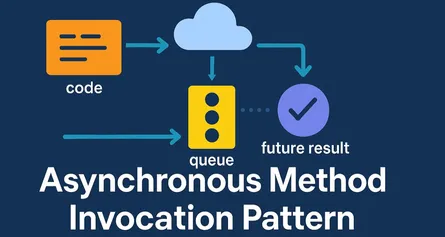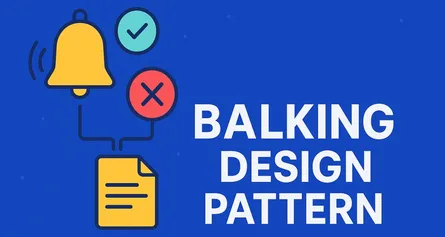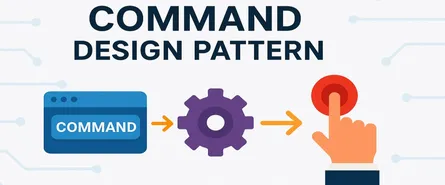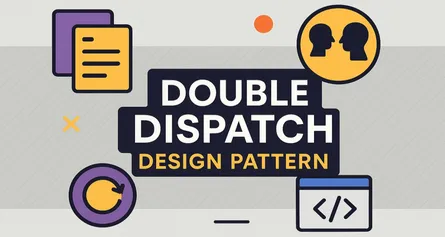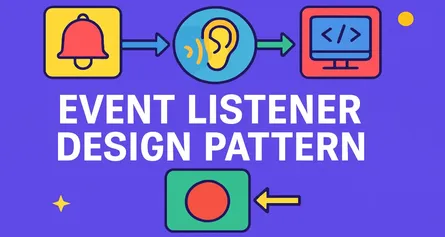
Visitor Design Pattern in C#: A Deep Dive You’ll Actually Enjoy
What is the Visitor Design Pattern?
Imagine you’re throwing a party. Each guest represents a different kind of object — some are developers, some are designers, some are testers. You, the host, want to “visit” each guest and ask them specific questions based on who they are.
The Visitor Pattern is like a party planner that lets you perform operations on a collection of different objects without changing their classes. It lets you “visit” each object and do something specific without messing with their internal workings.
Definition:
Visitor Pattern is a behavioral design pattern that lets you separate algorithms from the objects on which they operate.
Instead of stuffing all the operations inside your object classes, you define external classes — called Visitors — that perform operations. Cool, right?
In Simple Words:
- Separate responsibility: Object classes don’t need to know every operation that could happen to them.
- Add new behaviors: Without changing the object classes themselves.
Quick Analogy:
Think of it like a double-decker bus. The bus driver (the object) is good at driving. But the tour guide (the visitor) explains the sites. The driver doesn’t have to learn a bunch of history — that’s the tour guide’s job!
Core Principles Behind Visitor Pattern
Let’s dig a little deeper.
The Visitor Pattern is built on a few simple but mighty ideas:
| Principle | What It Means |
|---|---|
| Separation of Concerns | Keep the data and operations apart. |
| Open/Closed Principle (OCP) | Classes should be open for extension but closed for modification. |
| Double Dispatch | The operation that gets executed depends both on the type of Visitor and the type of Element. |
Wait… Double Dispatch?
Yep.
Normally, method calls in C# are single dispatch: the method to call depends only on the object.
But in double dispatch, BOTH the visitor and the element decide what to do. That’s how Visitor Pattern pulls its magic trick.
When (and Why) Should You Use Visitor Pattern?
Ok, so now you’re thinking:
“This sounds fancy… but when do I actually need it?”
You should reach for the Visitor Pattern when:
1. You have many related classes of objects with differing behaviors
Imagine you have dozens of shape classes — Circle, Rectangle, Triangle. You need to export them into different file formats.
Instead of clogging each shape with export logic, just use Visitors!
2. You need to perform unrelated operations on objects
New operations keep popping up (serialization, UI drawing, database saving).
Rather than bloating classes, add new Visitors.
3. You want to add operations without modifying existing classes
Maybe because they are compiled or off-limits.
Visitor can swoop in like a superhero without touching the original code.
4. You want to centralize behavior
Operations that affect many classes can be centralized in Visitors instead of being sprinkled all over the place.
Key Components of the Visitor Pattern
Now let’s break it down, piece by piece.
A Visitor Pattern has four major players:
| Component | Role |
|---|---|
| Visitor Interface | Declares visit methods for each concrete element type. |
| Concrete Visitor | Implements behavior for each type. |
| Element Interface | Declares the accept method that accepts visitors. |
| Concrete Element | Implements accept method to call back into visitor. |
Here’s a quick sketch of how it works:
Visitor
├──> VisitConcreteElementA()
└──> VisitConcreteElementB()
ConcreteVisitor
├──> VisitConcreteElementA()
└──> VisitConcreteElementB()
Element
└──> Accept(Visitor)
ConcreteElementA
└──> Accept(Visitor) -> visitor.VisitConcreteElementA(this)
ConcreteElementB
└──> Accept(Visitor) -> visitor.VisitConcreteElementB(this)In short:
- Elements accept Visitors.
- Visitors visit Elements.
Hands-on: Detailed Visitor Pattern Implementation in C#
You didn’t come here for theory alone, right? Let’s roll up our sleeves and build it out in C#.
We’ll create a simple example:
Shapes (Circle, Rectangle) and Visitors that calculate area and render them visually.
Step 1: Define the Element Interface
public interface IShape
{
void Accept(IShapeVisitor visitor);
}Every shape must accept a visitor. That’s the contract.
Step 2: Create Concrete Elements
public class Circle : IShape
{
public double Radius { get; set; }
public Circle(double radius)
{
Radius = radius;
}
public void Accept(IShapeVisitor visitor)
{
visitor.Visit(this);
}
}
public class Rectangle : IShape
{
public double Width { get; set; }
public double Height { get; set; }
public Rectangle(double width, double height)
{
Width = width;
Height = height;
}
public void Accept(IShapeVisitor visitor)
{
visitor.Visit(this);
}
}Notice how each shape’s Accept method calls the visitor.Visit(this) — that’s double dispatch!
Step 3: Define the Visitor Interface
public interface IShapeVisitor
{
void Visit(Circle circle);
void Visit(Rectangle rectangle);
}The visitor needs a Visit method for each shape type.
Step 4: Create Concrete Visitors
Let’s create two Visitors:
A) Area Calculator Visitor
public class AreaCalculatorVisitor : IShapeVisitor
{
public void Visit(Circle circle)
{
double area = Math.PI * circle.Radius * circle.Radius;
Console.WriteLine($"Circle area: {area}");
}
public void Visit(Rectangle rectangle)
{
double area = rectangle.Width * rectangle.Height;
Console.WriteLine($"Rectangle area: {area}");
}
}B) Shape Renderer Visitor
public class ShapeRendererVisitor : IShapeVisitor
{
public void Visit(Circle circle)
{
Console.WriteLine($"Drawing a Circle with radius {circle.Radius}");
}
public void Visit(Rectangle rectangle)
{
Console.WriteLine($"Drawing a Rectangle with width {rectangle.Width} and height {rectangle.Height}");
}
}Step 5: Putting It All Together
class Program
{
static void Main(string[] args)
{
List<IShape> shapes = new List<IShape>
{
new Circle(5),
new Rectangle(10, 20)
};
IShapeVisitor areaCalculator = new AreaCalculatorVisitor();
IShapeVisitor renderer = new ShapeRendererVisitor();
foreach (var shape in shapes)
{
shape.Accept(areaCalculator);
shape.Accept(renderer);
}
}
}Output:
Circle area: 78.53981633974483
Drawing a Circle with radius 5
Rectangle area: 200
Drawing a Rectangle with width 10 and height 20Different Ways to Implement the Visitor Pattern (with C# Examples)
Just like there’s more than one way to make a cup of coffee (instant? espresso? pour-over?), there’s more than one way to pull off the Visitor Pattern.
Let’s check out the main styles:
1. Classic Visitor (What we already saw)
- Visitor interface declares one
Visitmethod for each concrete Element. - Elements implement
Accept, calling the rightVisit.
This is the “schoolbook” version of Visitor — safe, predictable, and clean.
2. Reflection-Based Visitor
If you’re feeling fancy (and slightly dangerous), you can use reflection to simplify Visitors, especially when there are tons of Element types.
Example: Reflection Style
public class DynamicVisitor
{
public void Visit(object element)
{
var methodName = $"Visit{element.GetType().Name}";
var method = GetType().GetMethod(methodName);
if (method != null)
{
method.Invoke(this, new[] { element });
}
else
{
Console.WriteLine("No Visit method found for " + element.GetType().Name);
}
}
}
public class ShapeVisitor : DynamicVisitor
{
public void VisitCircle(Circle circle)
{
Console.WriteLine($"[Reflection] Circle with radius {circle.Radius}");
}
public void VisitRectangle(Rectangle rectangle)
{
Console.WriteLine($"[Reflection] Rectangle with size {rectangle.Width}x{rectangle.Height}");
}
}How it works:
Visit()finds and calls the correct method at runtime.- No need for an explicit Visitor interface!
Caution: Reflection is slower and harder to debug. Think of it like eating spicy food: good once in a while, painful if overused.
3. Generic Visitors
If you’re into templates and strong typing, you can also go full generic:
public interface IVisitor<T>
{
void Visit(T element);
}
public class CircleAreaVisitor : IVisitor<Circle>
{
public void Visit(Circle circle)
{
Console.WriteLine($"[Generic] Area: {Math.PI * circle.Radius * circle.Radius}");
}
}Neat and type-safe, but can explode into lots of small visitor classes.
Real-World Use Cases of Visitor Pattern
Alright, you’re probably wondering:
“Cool pattern. But where do I actually use this outside toy examples?”
Good question! Here’s where Visitor shines:
1. Compilers & Interpreters
- Syntax Trees are perfect for Visitor Pattern.
- Each node (IfStatement, ForLoop, Expression) accepts visitors for validation, optimization, or code generation.
Example: C# Roslyn Compiler uses Visitor extensively.
2. Graphics Systems
- Shapes like Circles, Rectangles, and Lines are visited by Renderers, Exporters, Hit-testers, etc.
3. Serialization Engines
- JSON, XML, binary serialization without cramming serialization logic inside every model class.
4. Database Mappers
- Walk through object graphs, mapping them to SQL tables dynamically.
5. Reporting Tools
- Generate different types of reports (PDF, HTML, CSV) based on the same data structure.
Anti-Patterns to Avoid
️ Warning zone!
Here’s how people mess up Visitor Pattern (don’t be “that” developer):
1. Overcomplicating Simple Problems
- If you only have two types and one operation…you don’t need Visitors.
Use polymorphism or simple methods.
2. Forgetting Open/Closed Principle
- Keep your Visitors open for new Visitors, but closed for modifying existing Elements.
- Don’t sneak in
if-elsechecks inside Visitors!
3. Cramming Logic into Elements
- If your
Acceptmethod starts doing real work (other than forwarding the visitor call), you’re doing it wrong.
4. Creating “God Visitors”
- A visitor that knows too much, does too much?
- Visitors should stay focused: one job at a time.
Advantages of the Visitor Pattern
Here’s why you’ll fall in love with Visitor once you get the hang of it:
Easy to Add New Operations
- Need a new behavior? Just add a new Visitor.
Keeps Your Classes Clean
- Element classes don’t need to know about every operation out there.
Perfect for Structured Object Graphs
- Trees, linked lists, composite structures — Visitor Pattern is a boss at traversing them.
Separation of Concerns
- Logic is organized nicely by type of operation, not splattered across your elements.
Disadvantages of the Visitor Pattern
Buuut…it’s not all rainbows and butterflies .
Here’s what can go wrong:
Hard to Add New Element Types
- If you add a new Element, you have to update every Visitor to handle it.
- Ouch, right?
Can Introduce Tight Coupling
- Visitors must know about all concrete Element types.
Reflection-based Visitors Are Risky
- Performance hit.
- Harder to trace and debug.
Awkward When Many Operations Have Nothing in Common
- Visitor Pattern is best when operations are related.
If your operations are wildly different, it can get messy fast.
Conclusion: Is Visitor Pattern Your New Best Friend?
If you need flexibility, clean separation, and powerful traversal, the Visitor Pattern is your secret weapon.
But — and it’s a big but — only reach for it when you really need it.
- Too simple? Skip Visitor.
- Complex, evolving operations on structured objects? Visitor all the way!
Think of Visitor Pattern like a Swiss Army knife ️ — incredibly handy for the right jobs, totally overkill for others.
Next time you’re staring at a mountain of shape classes, AST nodes, or business model objects needing multiple operations, remember:
Visitors can visit and conquer them all…without leaving a mess.
Share this article
Help others discover this content
About Sudhir mangla
Content creator and writer passionate about sharing knowledge and insights.
View all articles by Sudhir mangla →